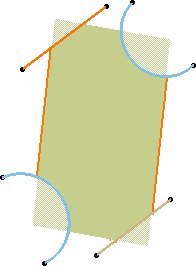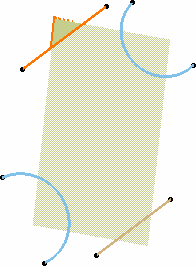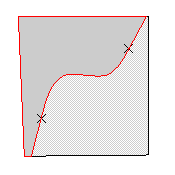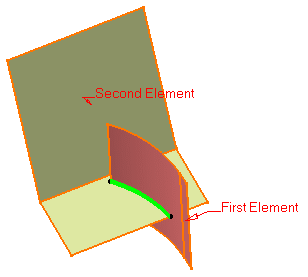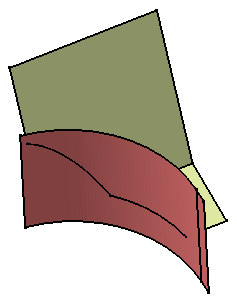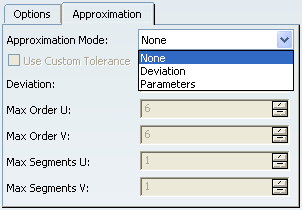You can split elements by selecting a cutting element.
Click Split
 in the Operation toolbar.
in the Operation toolbar.
The Split Definition dialog box appears as
well as the Tools Palette.
For more information about the Tools Palette, refer to Infrastructure User's Guide: Selecting
Using Selection Traps.
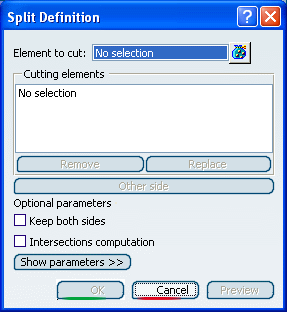
In the Element to cut box, select the element to be split.
You should make your selection by clicking on the portion
that you want to keep after the split.
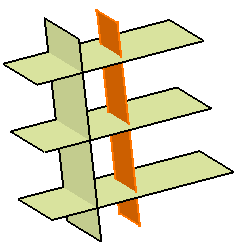
You can select several elements
to cut. In that case, click Element to cut again or click
 .
The Elements to cut dialog box appears. Select as many elements
as needed. Click Close to return to the Split Definition
dialog box. The number of selected elements is displayed in the Element to cut box
.
The Elements to cut dialog box appears. Select as many elements
as needed. Click Close to return to the Split Definition
dialog box. The number of selected elements is displayed in the Element to cut box
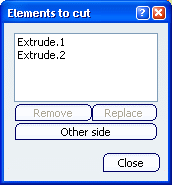
Click Remove or Replace to modify
the elements list.
When several elements to cut are selected, the
selected portions are not taken into account as parts to keep. The parts
to be kept depend on the type of the cutting element (point, curve,
surface, etc.) and the orientation of cutting elements and the elements
to cut.
Click Other side to reverse the portion to be kept, element
by element.
In the Cutting elements area, select the cutting element.
A preview of the split appears. You can change the portion
to be kept by selecting that portion.
You can also select the portion to be kept by clicking
Other side.
This option applies on all selected elements to cut.
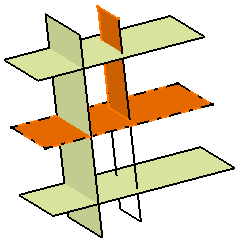
Note:
Optional: Select the Keep both sides check
box to retain the other side of the split element after the operation.
In that case it appears as aggregated under the first element and both
split elements can only be edited together and the aggregated element
alone cannot be deleted.
Optional: Click Show Parameters>> to view more options.
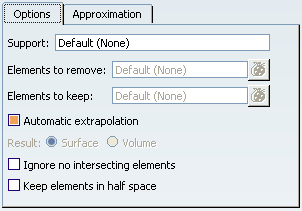
Optional: In the Options tab, select the Ignore no intersecting elements
check box to split many elements (curves, surfaces, volumes) when the
cutting element does not intersect all the elements.
Optional: You can select the Keep elements in half space
check box to keep all the elements that are on one side of the cutting
infinite plane. The cutting element defines this half space.
Elements to cut: dark blue and light blue surfaces
; Cutting elements: yellow and purple planes

Result with the Ignore no intersecting elements check box selected

Element to cut: non connex light blue surface ;
Cutting element: yellow plane

Result with Keep elements in half space check box selected

Optional: You can select the Approximation tab to control the quality of the result of the Split through several parameters and modes.
Click OK to split the element.
The created element (identified as Split.xxx) is added
to the specification tree.
In the case several elements to cut were used, the created
elements are aggregated under a Multi-Output.xxx feature.
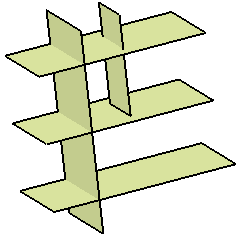
In the illustrations below, the top-left line is the
first splitting element. In the left illustration it defines an area
that intersects with the other three splitting curves, and in the illustration
to the right, these three elements are useless to split the area defined
by the first splitting element.
To remove or replace one of these cutting
elements, select it from the list and click Remove or
Replace.
![]()
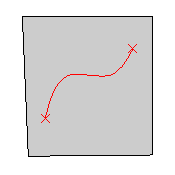
![]()












